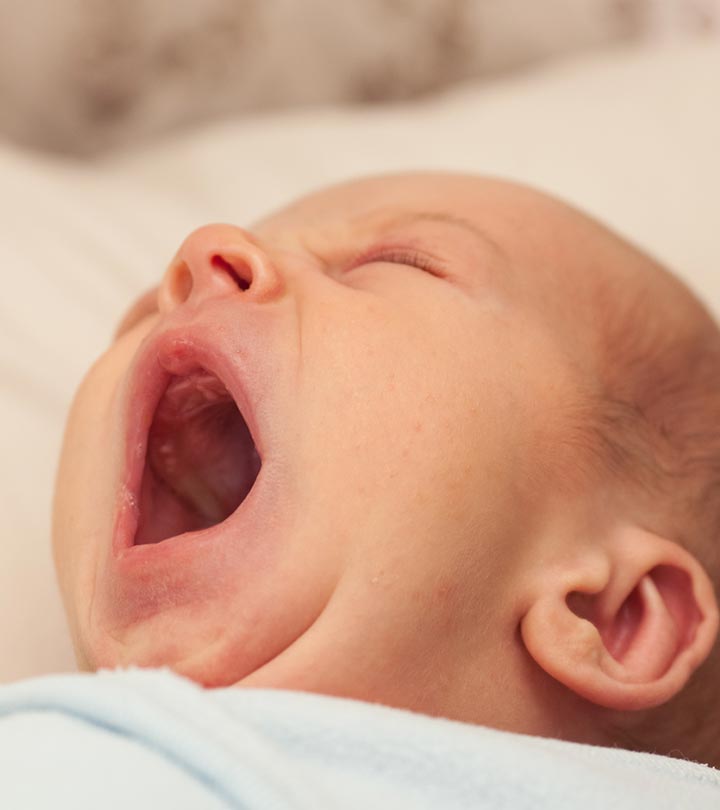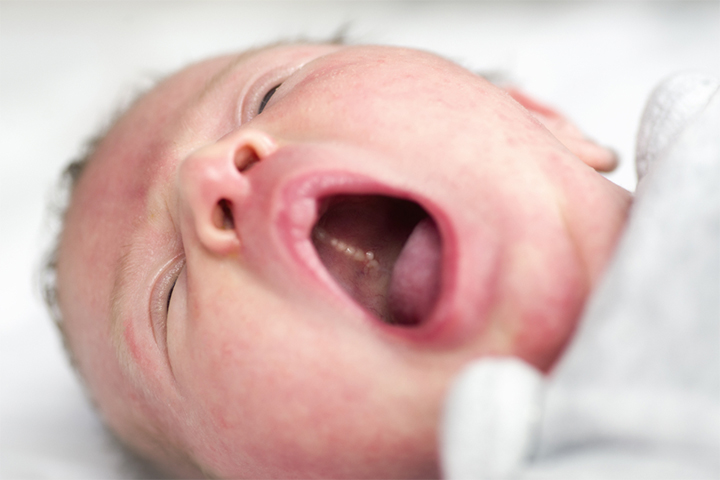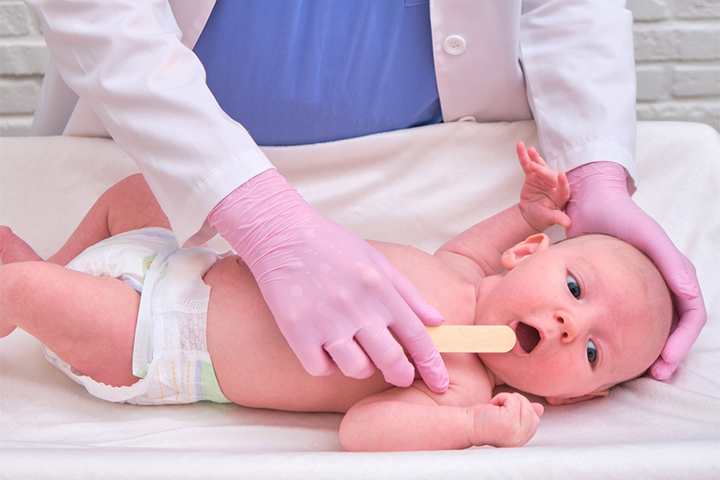It is common to find Epstein pearls in newborn babies. They are tiny, white bumps that appear in the baby’s mouth and are also called gingivaliXA structure consisting of gums and a mucosal layer that surrounds and protects teeth cystsiXFluid-filled, benign growths that form on or under the skim. Epstein pearls have been named after Alois Epstein, a Czech pediatric physician who first described this cyst.
Approximately 60–85% of newborns have gingival cysts (1). Although Epstein pearls are commonly found on the roof of the mouth or gums in most babies, some male newborns may have it on their penis. No specific treatment is required for Epstein pearls. However, seek medical care to rule out conditions that may resemble Epstein pearls.
Read on to know the causes, symptoms, diagnosis, and treatment of Epstein pearls in newborn babies.
Causes Of Epstein Pearls In Babies
Some studies suggest that Epstein pearls occur due to epithelial cells’ entrapment during palate development (1). It means that the skin gets trapped while mouth structures are developing during the fetal period. While the jaw and the palate (roof of the mouth) fuse during the final phase of mouth development, the skin layer may get stuck and cause tiny cysts or lesions.
Epstein pearls contain keratin, a protein found in skin and mucous membranes.
Symptoms And Signs Of Epstein Pearls In Babies
Epstein pearls appear as whitish-yellow bumps or nodules. A cyst can be one to three millimeters in size and is usually seen on the gums and roof of the oral cavity (1). You may notice a cluster of small round or oval bumps rather than a single bump in most cases.
They do not cause any specific symptoms, such as fever and swelling. Although Epstein pearl may resemble an emerging tooth, the cyst does not cause pain or other teething signs.
Discussing how she made an unusual discovery in her son’s mouth shortly after his birth, an avid blogger, Bridget, says, “The day little Jude was born, I noticed when he yawned little white balls or cysts on the roof of his mouth. A few days later, I was told that they could be a sign of thrush, a not-so-uncommon ailment in infants. Shortly after this, I began feeling a burning sensation in my breasts following breastfeeding, so I promptly began the treatment of thrush. So, after a few weeks of treating both Jude and me for thrush, I wondered if what I was seeing in his mouth was a sign of the ailment. Apparently, the little bumps are not a sign of thrush but are something called ‘Epstein pearls.’ Unlike thrush, these spots are simply tiny filled papules or cysts that are completely harmless and eventually go away on their own (i).”
Seek medical care if bumps do not disappear within a few weeks, bleed, or grow large in size. You may also consult a pediatrician if your infant shows signs of pain, such as refusing to feed or crying.
Are Epstein Pearls In Newborns Dangerous?
Epstein pearls are not dangerous or painful. They are benign and go away in one to two weeks (2). Cysts may often break due to friction from breastfeeding, feeding bottles, or pacifiers.
Popping or squeezing cysts may result in bacterial infections and increase the risk of complications, such as sepsisiXA serious condition occurring as a result of an extreme reaction to an infection present in the body.
Usually, these are self-resolving cysts that go away without leaving any scars. It is rare to find Epstein pearls in babies older than three months. However, the cystic epithelium may remain in adult gingiva in some cases.
Diagnosis Of Epstein Pearls In Babies
A pediatrician can diagnose Epstein pearls during an oral physical examination. Laboratory examinations and imaging tests are usually not required.
An expert’s evaluation can help rule out conditions that could mimic Epstein pearls, such as oral thrushiXA fungal infection of the oral cavity that causes painful lesions, leading to eating and swallowing difficulties in babies, miliaiXSmall whitish bumps appearing on a baby’s face that are usually self-resolving, Bohn nodules (mucosal gland cysts), dental laminaiXA layer of epithelial tissue of the developing tooth , and natal teeth (teeth present at birth).
Natal teeth may irritate the baby while nursing, and some infants may accidentally swallow a fallen natal tooth. Therefore, if you notice a cyst in a baby’s mouth, consult a pediatrician to rule out the possibility of other conditions, which may cause complications.
Treatment Of Epstein Pearls In Babies
Epstein pearls may not require specific treatment and usually disappear within a few weeks (3). They may dissolve due to friction with the nipples while breastfeeding or drinking from a bottle.
The use of pacifiers and chewing toys may also break the Epstein pearls and gradually dissolve the bump. However, it is not recommended to squeeze or pop the Epstein pearls using fingers or any other instrument.












